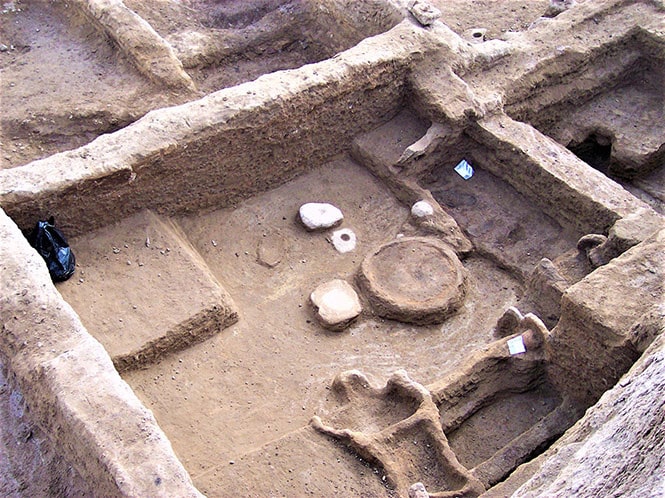
Gökhöyük might possess a settlement that will shed light on the 7000-year history of Central Anatolia
Gökhöyük, located in the Seydişehir district of Konya province, is believed to have a settlement dating back to the 7th millennium BC.
During the rescue excavations carried out at Gökhöyük between 2022 and 2005, structures such as houses, walls, and burial areas were uncovered, along with various artifacts including pottery, tools, and metal objects.
The findings at Gökhöyük indicate its significance as a trading and craft center during the Bronze Age. The artifacts reveal that the inhabitants engaged in agricultural activities, pottery production, and metalwork.
The surface surveys initiated in 2019 in and around Gökhöyük yielded significant data related to the prehistoric period. The research also demonstrated traces from five distinct historical periods within the region.
📣 Our WhatsApp channel is now LIVE! Stay up-to-date with the latest news and updates, just click here to follow us on WhatsApp and never miss a thing!!

After the surface surveys were completed, excavation works were initiated this year under the leadership of Dr. Ramazan Gündüz, a Research Assistant from the Department of Archaeology at Selçuk University Faculty of Letters.

Gündüz stated, “As a result of our conducted research, we have begun to obtain findings. Within the scope of our studies, we are gathering significant data about the prehistoric era of our region, unveiling the historical aspects of our area. Through scientific methods, we have identified evidence from five distinct historical periods in the settlement we have been investigating. The study conducted at Gökhüyük holds particular importance due to its traces from five different periods, setting it apart from other sites. Considering the connections and the mound of Gökhüyük, we speculate that it might shed light on a settlement dating back approximately 7000 years to the southern region of Central Anatolia.”
Gökhöyük is notable for its geographical location, situated close to water sources (adjacent to Lake Suğla, known as Trigotis in ancient times) and fertile agricultural lands. This proximity enhances its significance.
A cultural continuity from the Neolithic Period to the Iron Age can be observed, tracing its path through the recovered pottery artifacts.
You may also like
- A 1700-year-old statue of Pan unearthed during the excavations at Polyeuktos in İstanbul
- The granary was found in the ancient city of Sebaste, founded by the first Roman emperor Augustus
- Donalar Kale Kapı Rock Tomb or Donalar Rock Tomb
- Theater emerges as works continue in ancient city of Perinthos
- Urartian King Argishti’s bronze shield revealed the name of an unknown country
- The religious center of Lycia, the ancient city of Letoon
- Who were the Luwians?
- A new study brings a fresh perspective on the Anatolian origin of the Indo-European languages
- Perhaps the oldest thermal treatment center in the world, which has been in continuous use for 2000 years -Basilica Therma Roman Bath or King’s Daughter-
- The largest synagogue of the ancient world, located in the ancient city of Sardis, is being restored











Leave a Reply